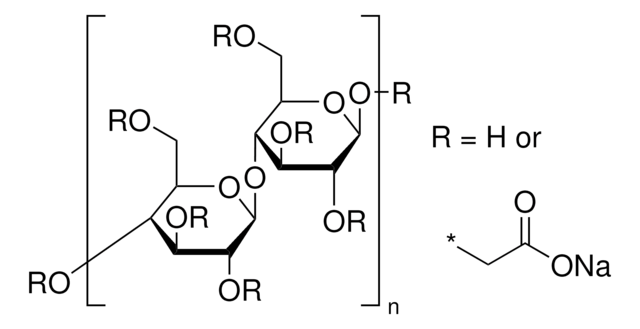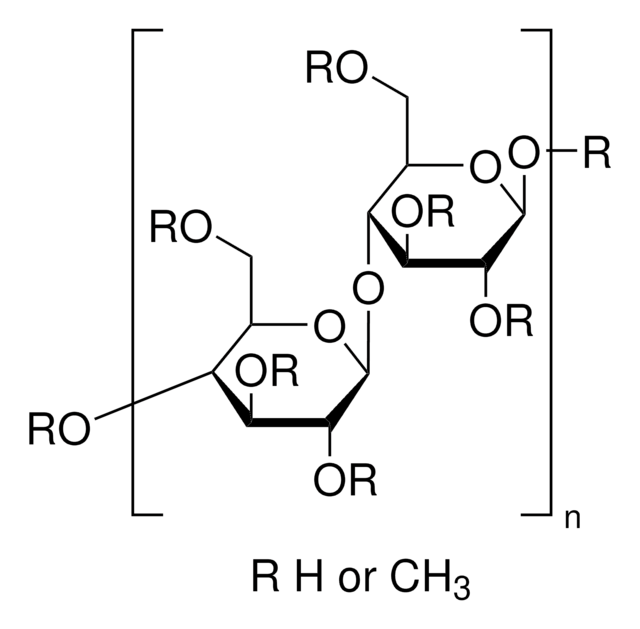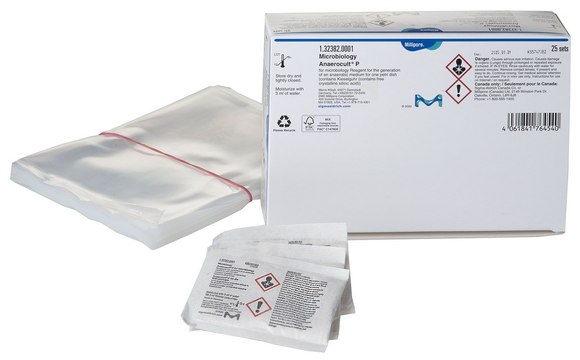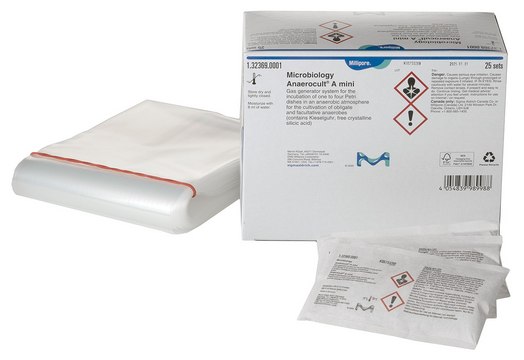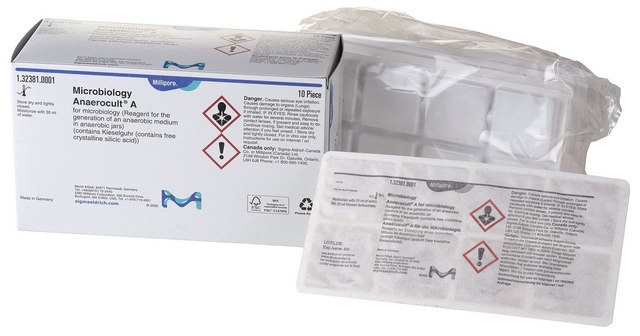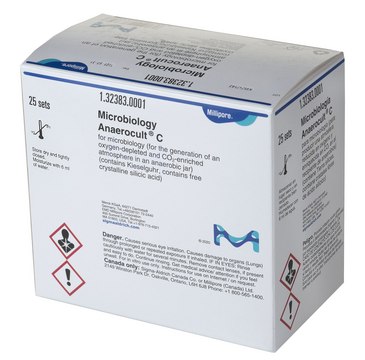C9481
Carboxymethylcellulose sodium
meets USP testing specifications, Medium viscosity
Synonym(s):
Carboxymethylcellulose sodium salt, Sodium carboxymethylcellulose
About This Item
Recommended Products
Agency
USP/NF
meets USP testing specifications
Quality Level
Assay
6.5-9.5% anhydrous basis (Sodium)
form
powder
color
light yellow
pH
(10 g/L68 °F neutral)
viscosity
400-800 cP, 2 % in H2O(25 °C)(lit.)
mp
> 300.05 °C ((> 572.09 °F ))
solubility
water: soluble
SMILES string
[Na].OC(C(O)C(O)C=O)C(O)CO.OC(=O)C
Looking for similar products? Visit Product Comparison Guide
1 of 4
This Item | 132369 | 132381 | 132383 |
|---|---|---|---|
| packaging pkg of 25 Anaerocult™ P and 25 special incubation bags | packaging pkg of 25 Anaerocult™ A mini and 25 special incubation bags | packaging pkg of 10 Anaerocult™ A | packaging pack of 25 bags |
| storage condition (Store dry and tightly closed. | storage condition (Store dry and tightly closed) | storage condition (Store dry and tightly closed. | storage condition (Store dry and tightly closed. |
| storage temp. 15-25°C | storage temp. 15-25°C | storage temp. 15-25°C | storage temp. 15-25°C |
| form solid | form solid | form solid | form solid |
| feature Creates an oxygen free (anaerobic) environment and a CO2 atmosphere in a single petri dish. | feature Chemically bind oxygen quickly and completely, Creates an oxygen free (anaerobic) environment and a CO2 atmosphere. | feature Creates an oxygen free (anaerobic) environment and a CO2 atmosphere in a 2.5L anaerobic jar. | feature Generates an oxygen depleted and CO2-enriched atmosphere in a 2.5 liter anaerobe jar. |
General description
Application
Other Notes
Storage Class Code
11 - Combustible Solids
WGK
WGK 1
Flash Point(F)
Not applicable
Flash Point(C)
Not applicable
Personal Protective Equipment
Choose from one of the most recent versions:
Certificates of Analysis (COA)
Don't see the Right Version?
If you require a particular version, you can look up a specific certificate by the Lot or Batch number.
Already Own This Product?
Find documentation for the products that you have recently purchased in the Document Library.
Our team of scientists has experience in all areas of research including Life Science, Material Science, Chemical Synthesis, Chromatography, Analytical and many others.
Contact Technical Service